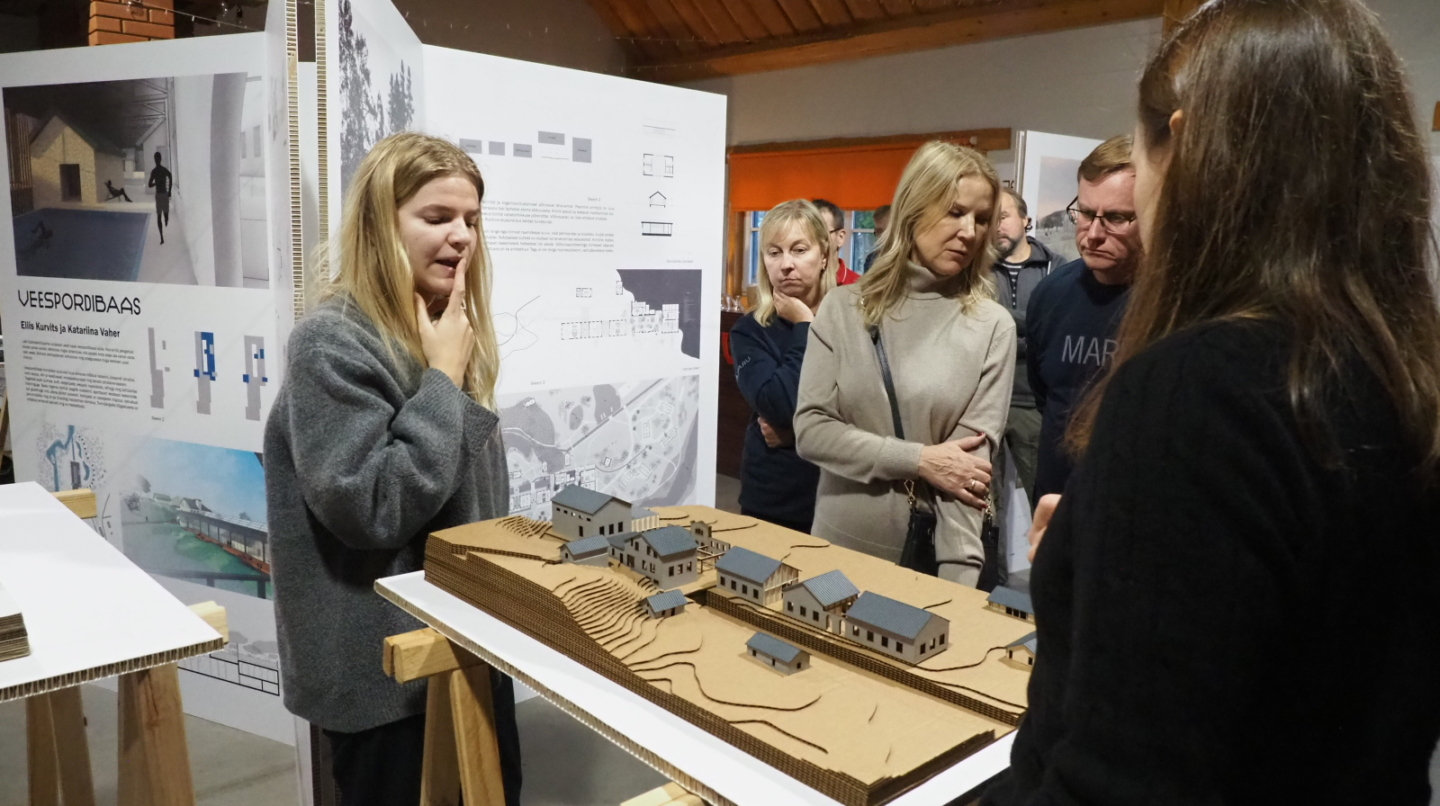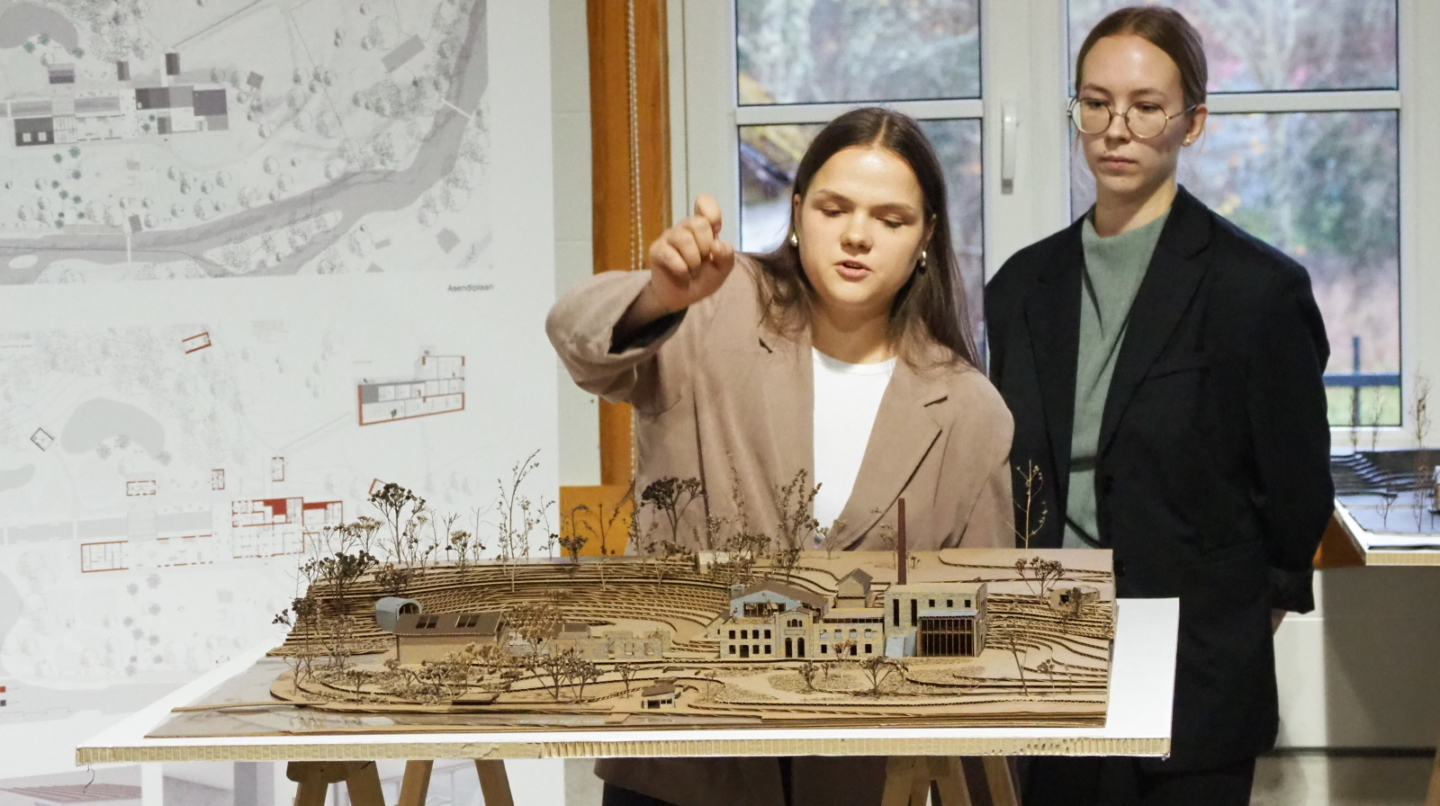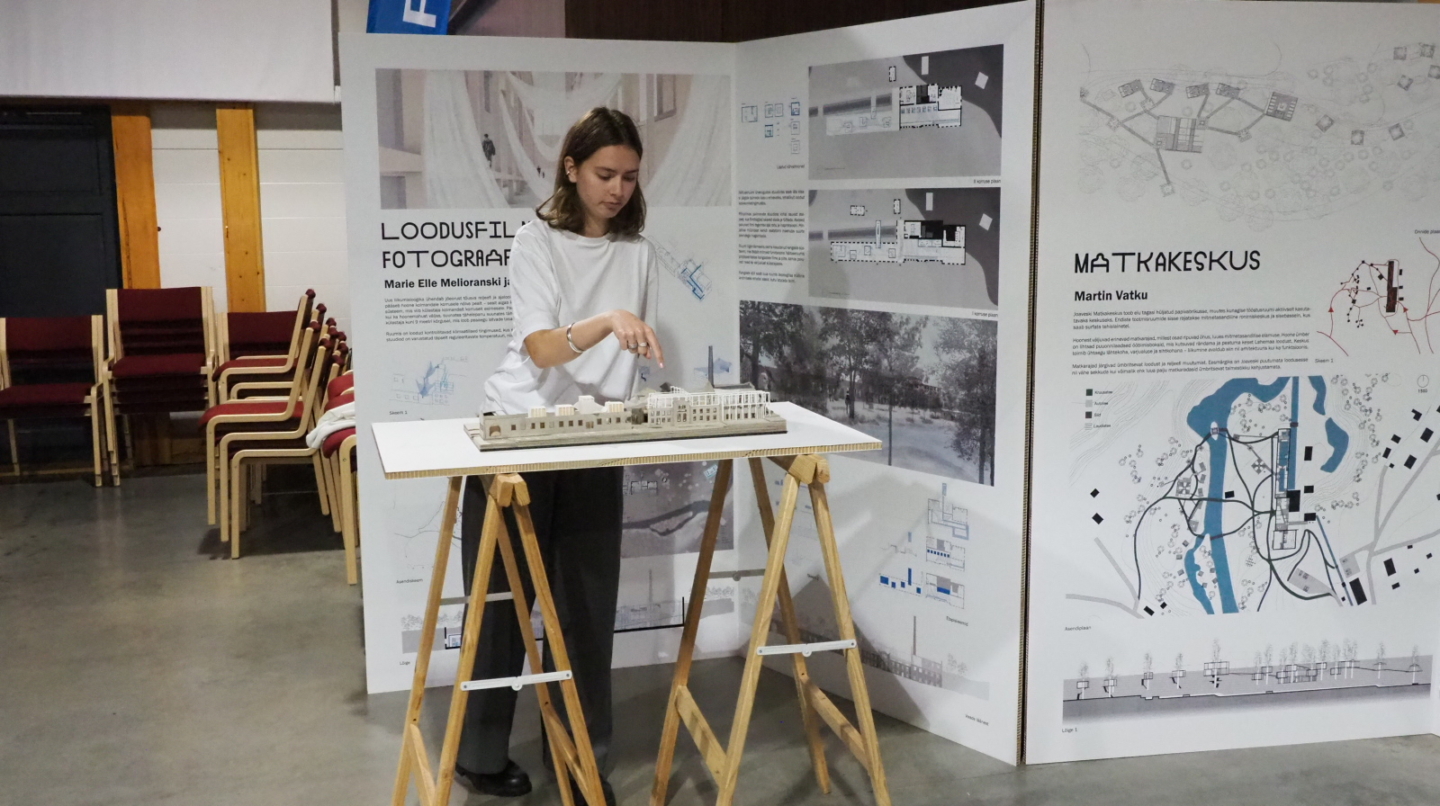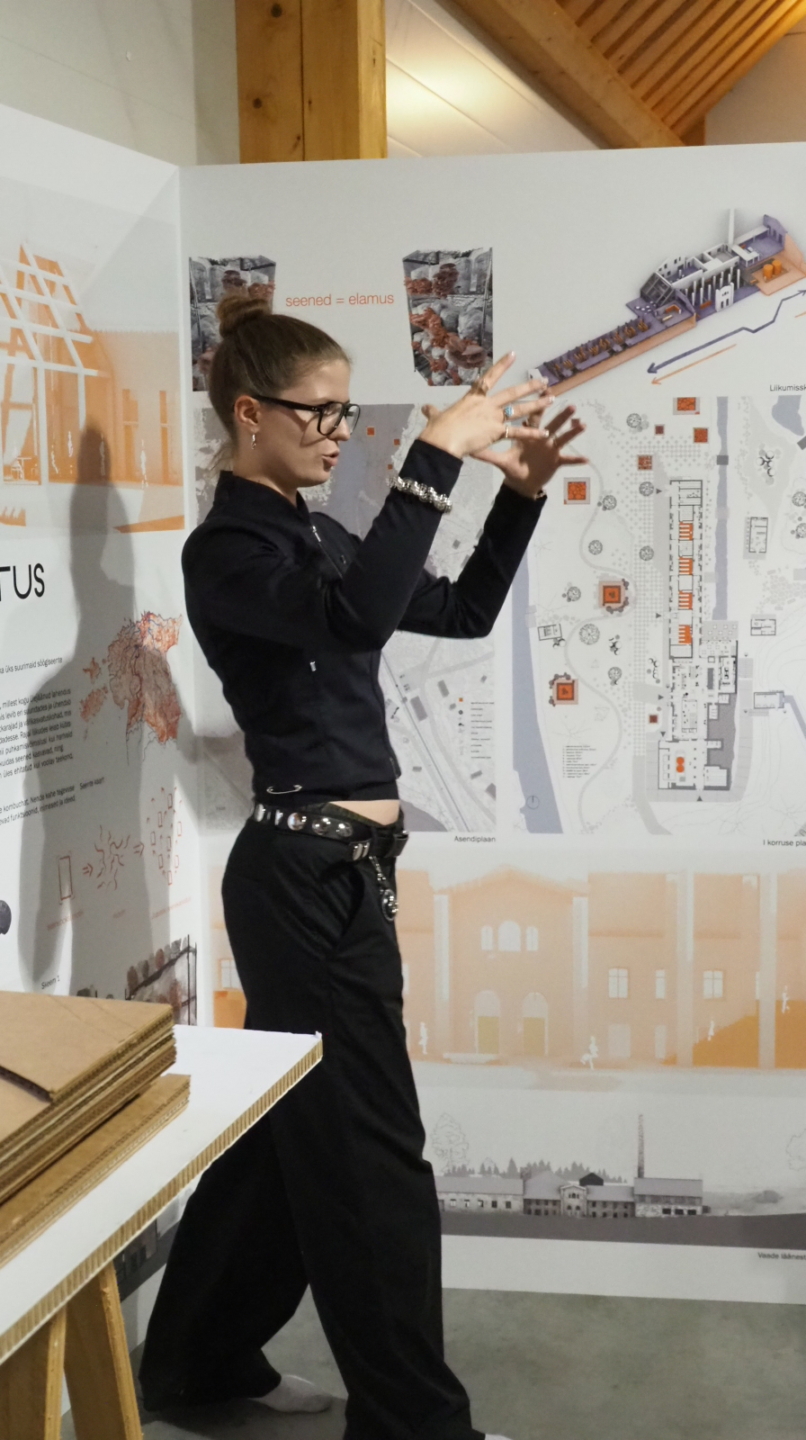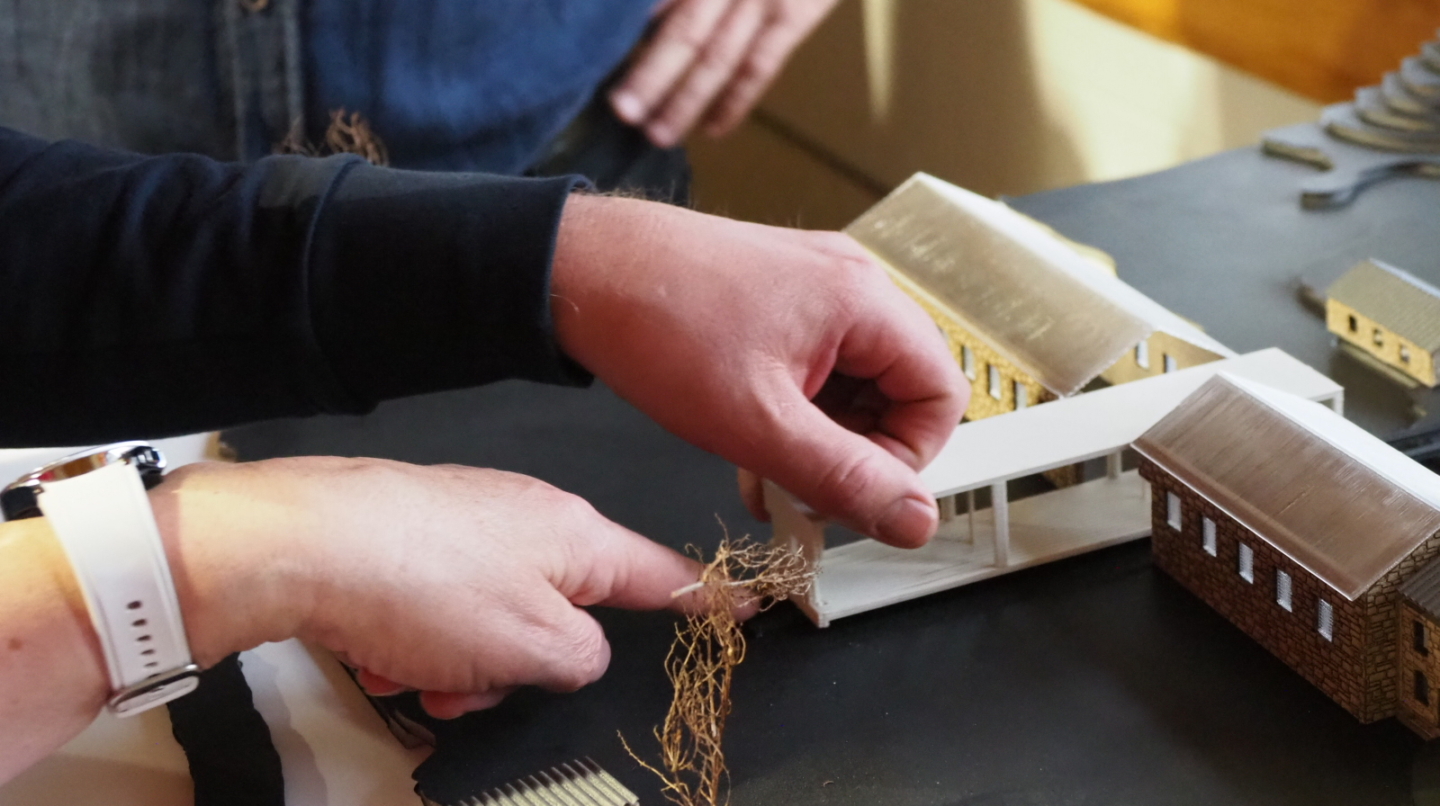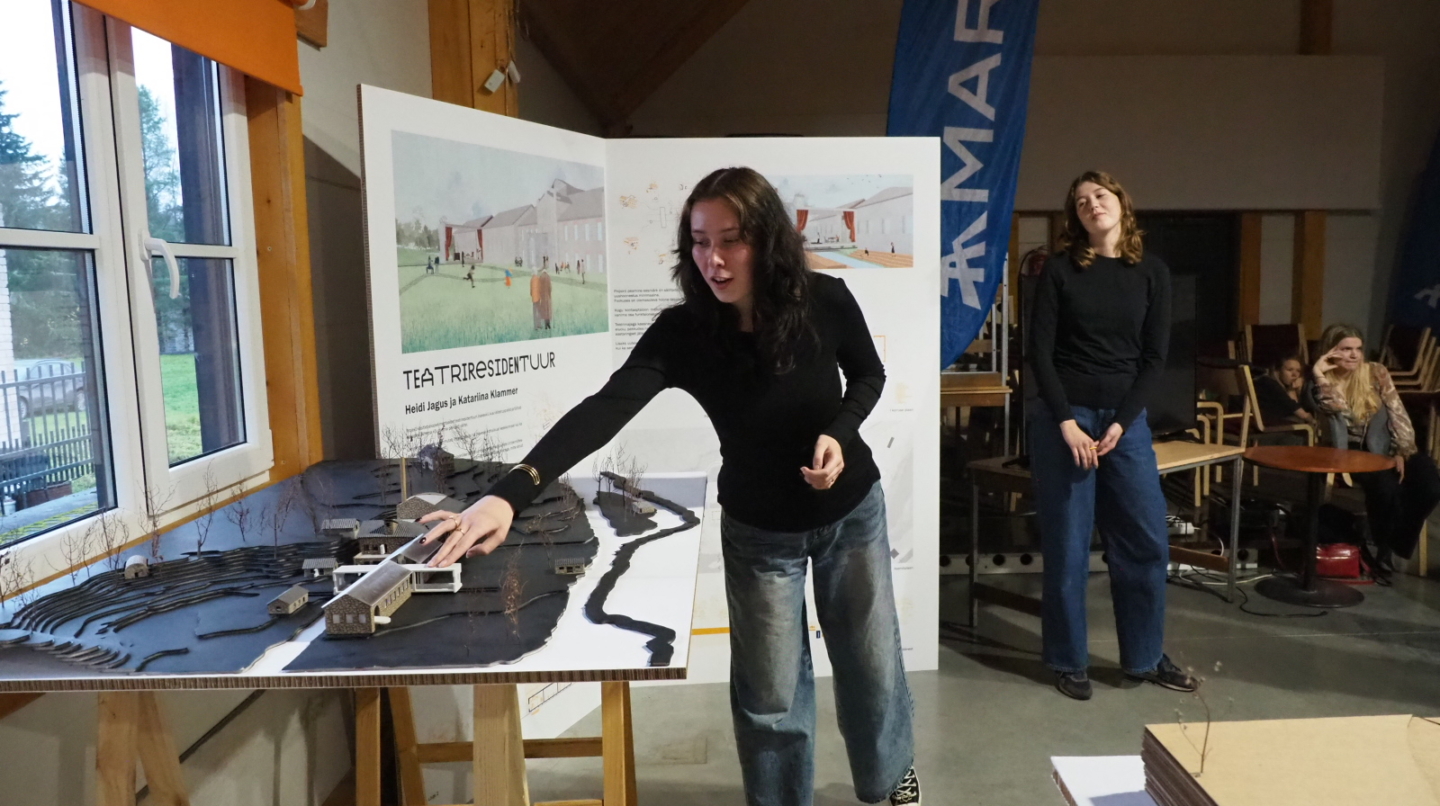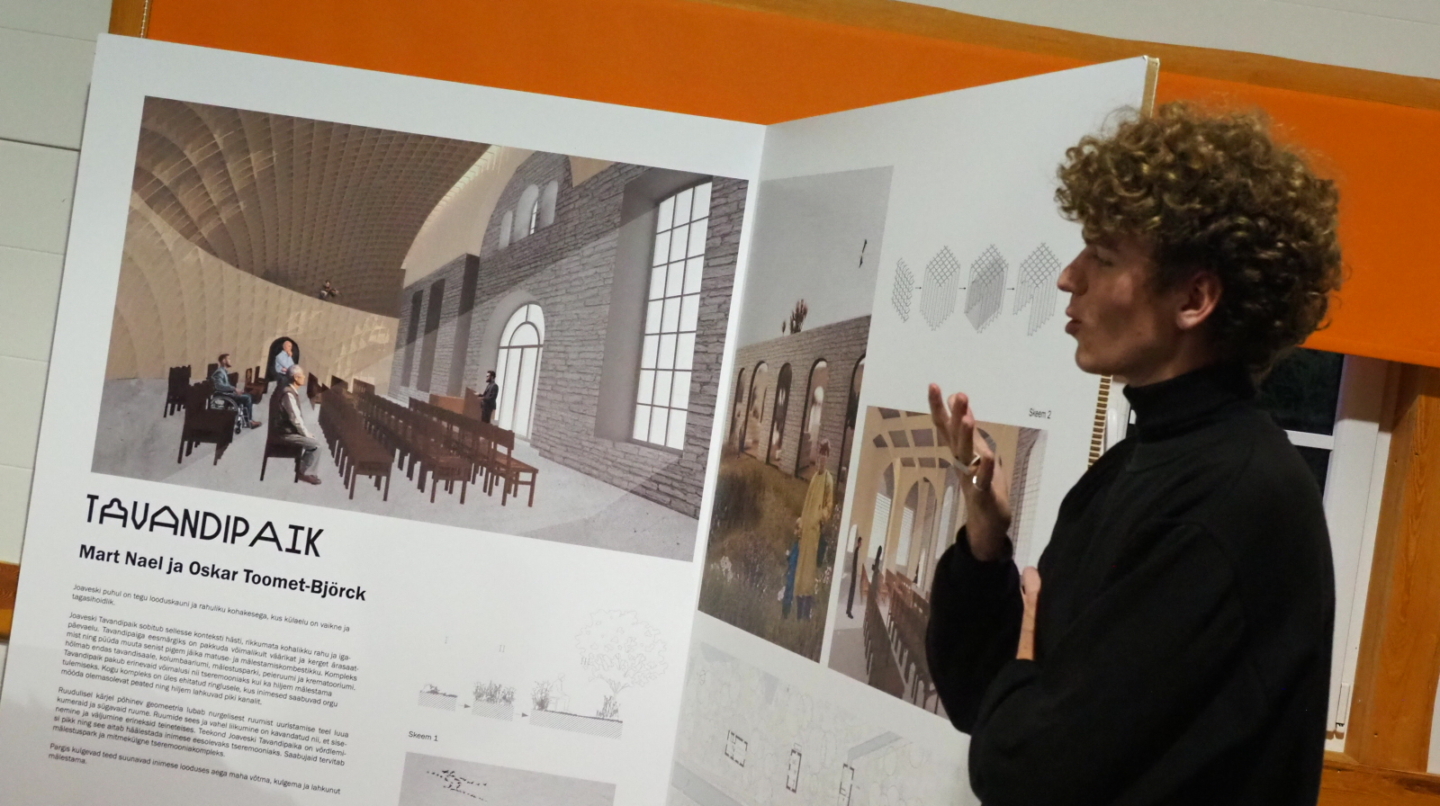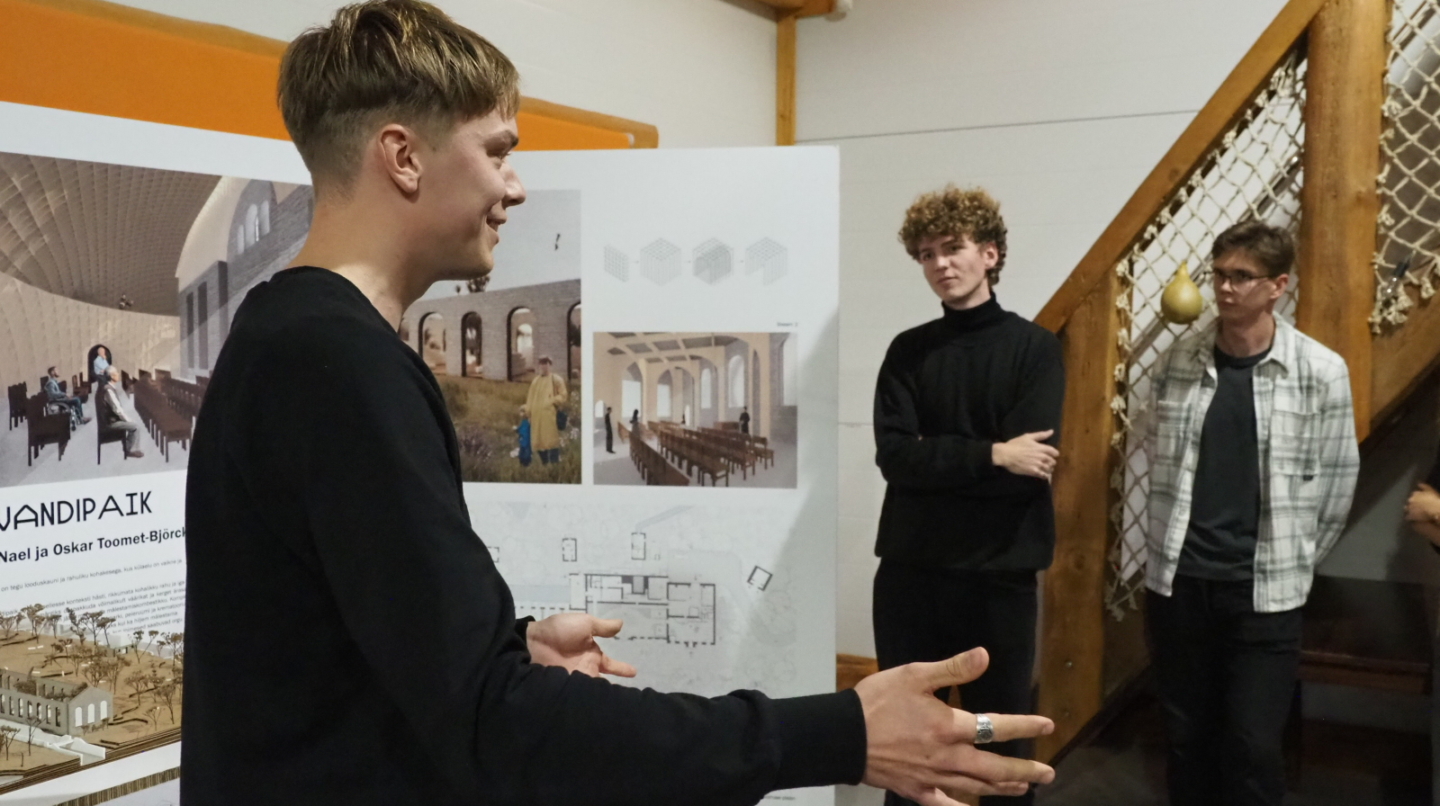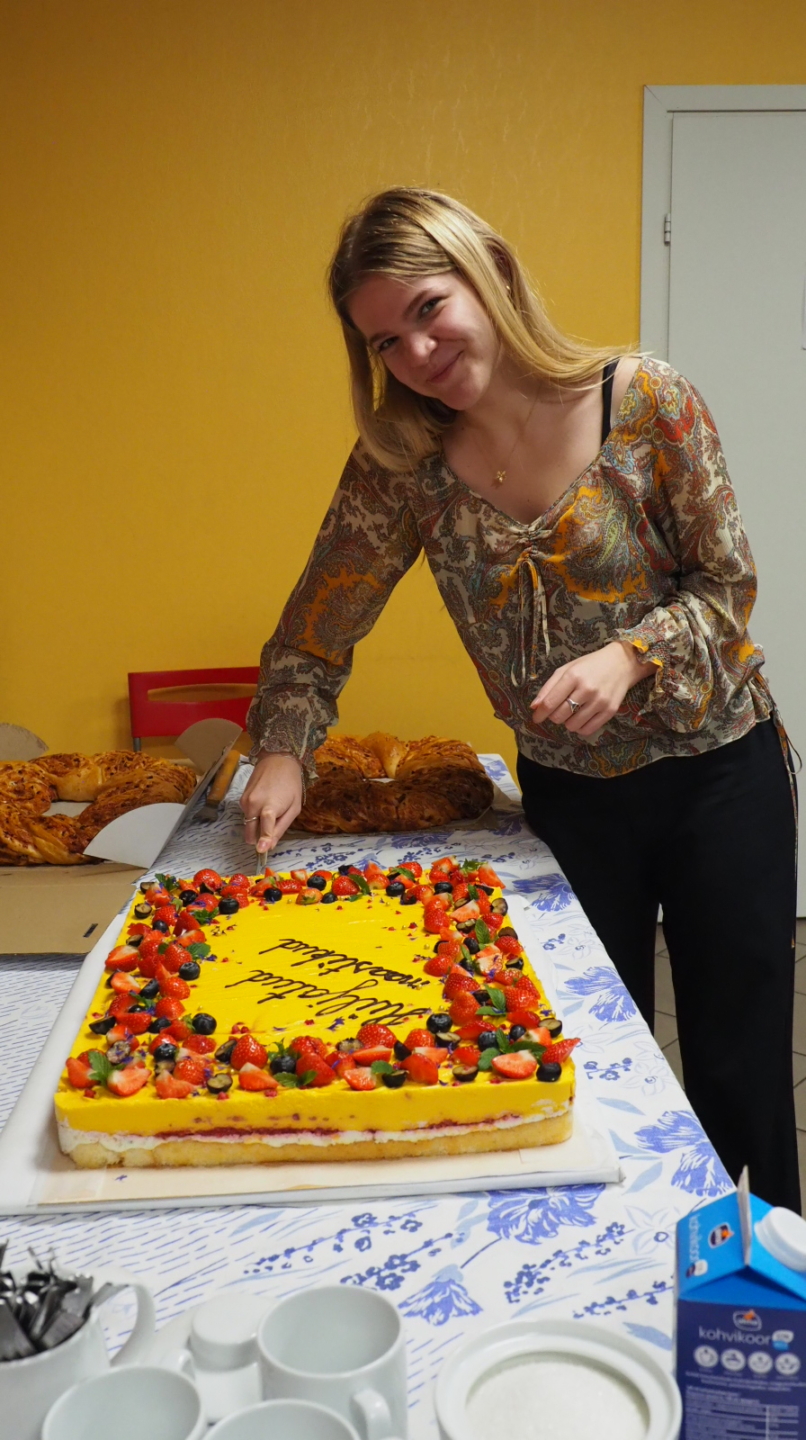News
From wildlife clinic to mushroom center: Students’ visions give new life to Joaveski cardboard factory
03.11.2025On Friday, 31 October, the exhibition “Abandoned landscapes. Joaveski cardboard factory” was opened at the Joaveski community center in Lahemaa, presenting the visions of EKA students for giving new life to the historic factory complex. The exhibition will remain open in Joaveski until the end of March 2026.
Last spring, now third-year students of the Estonian Academy of Arts (EKA) who study architecture and urban planning, spent a week in the snowy Joaveski. The workshop resulted in ten large-scale projects, in which 20 students mapped the place’s opportunities to become a valued service provider instead of an unused industrial landscape.
“We look at both the value of the buildings and the possibilities they present: how much new we need to build, how much we can preserve the old. Since we are dealing with old buildings, LCA (carbon footprint calculation) methods have been taken into account, while in all other ways the students are free to envision the future. As such, the outcome demonstrates how they see the world,” said Andres Ojari, supervisor of the EKA professional studio.
Drawing inspiration from nature
Many projects highlighted the value of Joaveski as a beautiful, peaceful place that is not located far from the capital city. Among the blueprints are a rehabilitation village for addicts inspired by the Lootus (Hope) village, a recuperation center for artists, and a theater residency which includes a performance hall for 200 people. Other visions drew inspiration directly from nature, such as the projects for Joaveski nature film and photography center, a natural heritage center housing Lahemaa archives, and a clinic for wild animals and birds.
A hiking center operating largely under the open sky, where the surrounding hiking trails would converge, envisioned complete with an indoor surfing pool and a climbing area for adventure sports enthusiasts, seemed to require the smallest financial investment. Unique services could be offered by a water sports center, a mushroom cultivation facility, and a tranquil memorial complex for sending off and remembering lost loved ones.
Katariina Klammer, co-author of the theatre residency model and student of architecture and urban planning at EKA, noted that this was her first time working with architectural heritage. “It allowed me to do a lot of thinking and testing about what to respect and what to tear down,” said Klammer, adding that the history and nature of Joaveski added a lot of charm to the project. The “Abandoned Landscapes” initiative gave Klammer a strong impetus to consider specializing in restoration and heritage conservation at EKA, which is an option alongside urban planning and landscape architecture.
Valuing old industrial complexes
The studio project “Abandoned Landscapes” focuses on the relationship between architecture and the environment, looking at the historical industrial landscape and its potential in the modern urban environment. The workshop that seeks to find modern solutions for disused building complexes was organised for the 14th time this year by the Faculty of Architecture and the Department of Heritage Protection and Conservation at EKA. In past years, the project has researched Peri farm, Kodijärve manor, Tapa railway station, and the Kiviõli, Sindi and Kohtla-Järve industrial areas, among other sites.
The buildings of the Joaveski cardboard factory, built at the end of the 19th century, have been empty since 1994, when the production of stamp albums was discontinued at the facility. A few years later, the Joaveski factory, along with the manager’s house and several subsidiary buildings, was purchased by AS Maru. The company launched a hydroelectric power plant in Joaveski in 2001, which is still operating today. However, the majority of the building complex is seeking a new purpose, as it is struggling to find an economically viable investment model that would also comply with the increasingly restrictive legal environment.
COME VISIT! The exhibition will remain open at the Joaveski Community Center during library opening hours until 1 April 2026: Mondays and Fridays 9:00-16:00 and Wednesdays 11:00-15:00. The exhibition is supported by MTÜ Joaveski küla and AS Maru.

